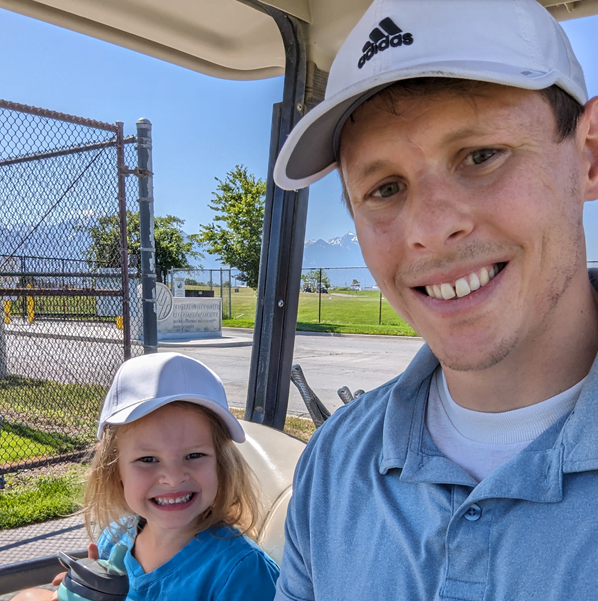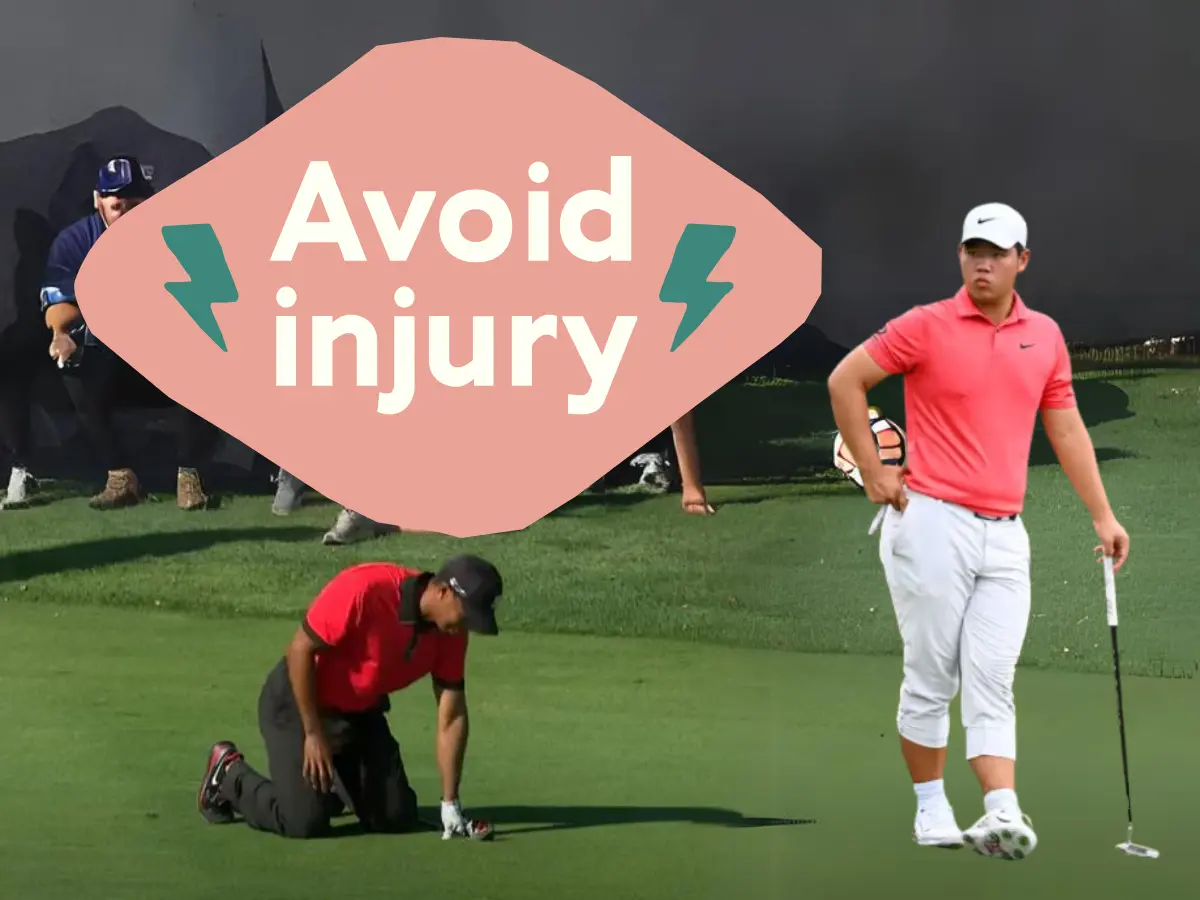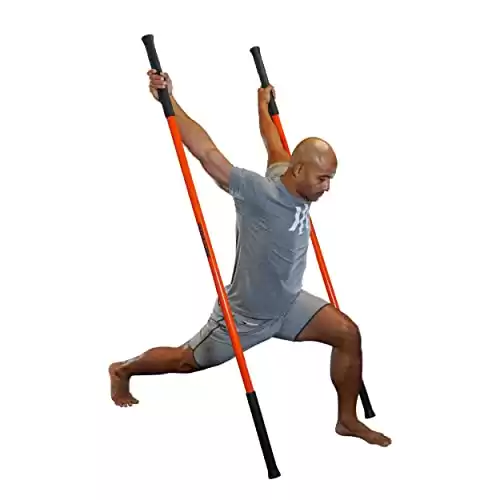This post contains affiliate links. We may earn a few bucks at no cost to you if you purchase a product through these links. As an Amazon Associate I earn from qualifying purchases.
Golfing through an injury is the worst.
An injury can effect your game in every aspect possible: driving, irons, chipping, putting, and mentally. It is possible to fight through the injury, but it is better to avoid the injury in the first place.
Avoiding all golf injuries is impossible. However, there are some things you can do the reduce the frequency of those injuries.
Should I be Worried About Golf Injuries?
Tiger Woods is famous for fighting through injuries to compete in tournaments. No one has ever questioned his grit and commitment to the game, but has it cost him a few years of his career?
He dropped to his knees after a shot in 2013 at the Barclays, but continued on to finish T2 at the tournament.
The casual golfer has no reason to fight through injuries like Tiger Woods. You aren’t proving much by fighting through an injury when there isn’t a championship on the line.
If you are looking for longevity in your golf game, please take the time recover from injuries. The goal, however, is to prevent those injuries in the first place.
1. Warm-Up
Preparing your body for swinging a golf club is the most effective way to prevent injuries.
A dynamic warm-up will get your blood flowing, your joints moving, and your confidence rolling. Your body will be ready to hammer the golf ball on the first tee. You will feel prepared instead of rusty.
You might even play better with a dynamic warm-up. Experienced golf trainers claim that a deliberate warmup can save about 1.5 strokes per round for the average player.
Before playing or practicing, warm up your muscles with stretches and light exercises. Focus on your arms, back, hips, legs, and thoracic spine to ensure your body is prepared for the game.
2. Strength and Flexibility Training
It is difficult to injure an area of your body that is both strong and flexible.
Strength and flexibility are the two hallmarks of an effective golf training program. Jon Rahm, Tiger Woods, Rory McIlroy, Dustin Johnson, and Brooks Koepka have documented the countless hours they spend in the gym getting stronger and more flexible.
There is no one-size-fits-all training program to improve your strength and flexibility. Any effort will help you prevent injuries on the golf course.
The best strength and mobility tool for golf is the stick mobility tool. It is so simple, yet so effective at increasing range of motion and strength.
Stick Mobility increases the mobility of your hips, spine, shoulders, and back. Your golf game will never be the same.
Work on strength and flexibility exercises that target the muscles used in golf, such as your core, back, shoulders, and hips. Your will see a huge difference in your how your body feels during a round of golf.
3. Pay Attention to Your Body
How do you know which aches and pains are about to become injuries? If you feel like the pain is getting progressively worse, then stop immediately.
Of course, there is no way to know for sure. You need to listen to your body and understand the movement that is causing the issue. If you can diagnose the problem, you can most likely fix it through rest and strength/mobility training.
You know your body better than anyone else.
Listen to your body’s signals. If you feel pain or discomfort, take it seriously. Pushing through pain can exacerbate injuries. Seek professional help if you feel like the problem isn’t getting better.
4. Stay Hydrated and Take Care of Your Health
Every physical therapist I’ve ever talked to says “DRINK WATER” and “STAY HYDRATED”. Your body has a hard time functioning properly if you don’t.
Proper hydrations support muscle function and recovery. It keeps your joints lubricated and supple, preventing injuries along the way.
Taking care of your health and drinking enough water while golfing 18 holes is a challenge. Make sure you bring plenty of water to stay hydrated and keep your golf bag stocked with healthy snacks.
5. Use Proper Equipment
There are hundreds of professionals dedicated to providing you with the best equipment for your unique swing. Why would you ever use ill-fitted equipment?
Make sure your clubs fit you properly. Ill-fitted clubs can force your body into unnatural positions, leading to injuries. Also, you might be surprised at how well you strike the ball with properly fitted clubs.
Get fitted by the best golf fitters in the world. Properly fitted golf clubs lower your scores and prevent bad swings.
Clubs aren’t the only thing you want to be fitted properly. Golf shoes are also an essential piece of equipment that can prevent injuries.
Try on a variety of golf shoes and spike patterns before you commit to a pair of shoes. In general, spikeless shoes are easier on your joints.
6. Pacing and Rest
This really applies to you if you are walking. If you are riding in a cart, it’s not a big deal.
If you are walking, avoid overexertion by pacing yourself during play. Some courses have huge hills and a lot of elevation to deal with. Take time to catch your breath and get you heart rate down before you take your next shot.
If you have a large bucket of balls on the range, then please slow down. Take your time and think through each swing. Overuse injuries are common if you are just pounding balls at the range.
7. Proper Technique
Get lessons and work on your technique. Your body is meant to move in a certain way, and you could be forcing it to move in an unnatural way. Unnatural movements = injuries.
Improper swings can strain muscles and joints, leading to injuries. Consider taking lessons from your local golf professional to ensure your form is correct.
Tour Pros generate a lot of swing speed and power. They train every day to perform at the top of their game.
Don’t expect to hit balls like a tour pro and you will prevent a lot of injuries.
8. Be Mindful of Your Environment
Golf courses are full of trip hazards. You could fall victim if you aren’t careful.
Watch out for uneven terrain, slippery surfaces, or other hazards on the golf course that could cause trips or falls. Be sure to wear proper footwear and watch your step. A rolled ankle can keep you off the golf course for a few weeks.
Tom Kim famously suffered an ankle injury when he slipped off the patio at his rental home during the British Open at Royal Liverpool in 2023. He fought through the injury and ended up with T2 finish in spite of the injury.
9. Cool Down
Do you immediately jump in your car and drive home after a round of golf? If so, you might want to rethink you post-golf routine.
Performing a few cool-down stretches and exercises can prevent stiffness and relax your muscles. You’ll recover quicker and be ready for the next round.
It doesn’t need to be anything crazy, just a few movements to make sure your joints and muscles are relaxed.
10. Seek Professional Advice
I always believe that you know your body best.
If you feel like an injury isn’t getting better and you don’t have an answer, seek help. There are professionals waiting to help you get rid of your pain.
If you experience persistent pain or have concerns about your technique, consider consulting a sports medicine professional or physical therapist specialized in golf-related injuries.
Conclusion
These 10 ways will help you prevent golf injuries and keep you playing long into the future. Golf can be hard on your joints if you aren’t careful.
By paying attention to your body and focusing on injury prevention, you can significantly reduce the risk of common injuries in golf.
Golf Gains X may provide information related to fitness, exercise, diet, and nutrition and is intended for your personal use and informational purposes only. You should consult with a physician before beginning any exercise, fitness, diet, or nutrition routine, especially if you are pregnant or have pre-existing health conditions. Nothing contained on this website or any other Golf Gains X content should be considered as medical advice or diagnosis. Your use of the Golf Gains X content is solely at your own risk.

Jacob is a Professional Engineer, professional gym-goer, and golf enthusiast. He is obsessed with golf-specific fitness, golf simulators, and hitting long drives.



